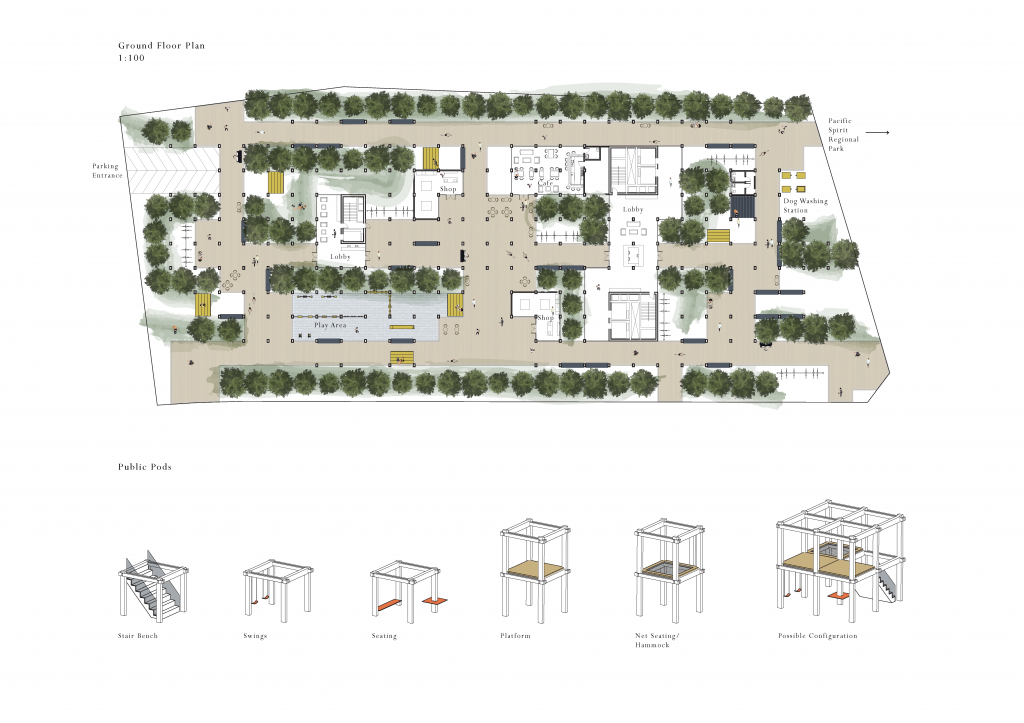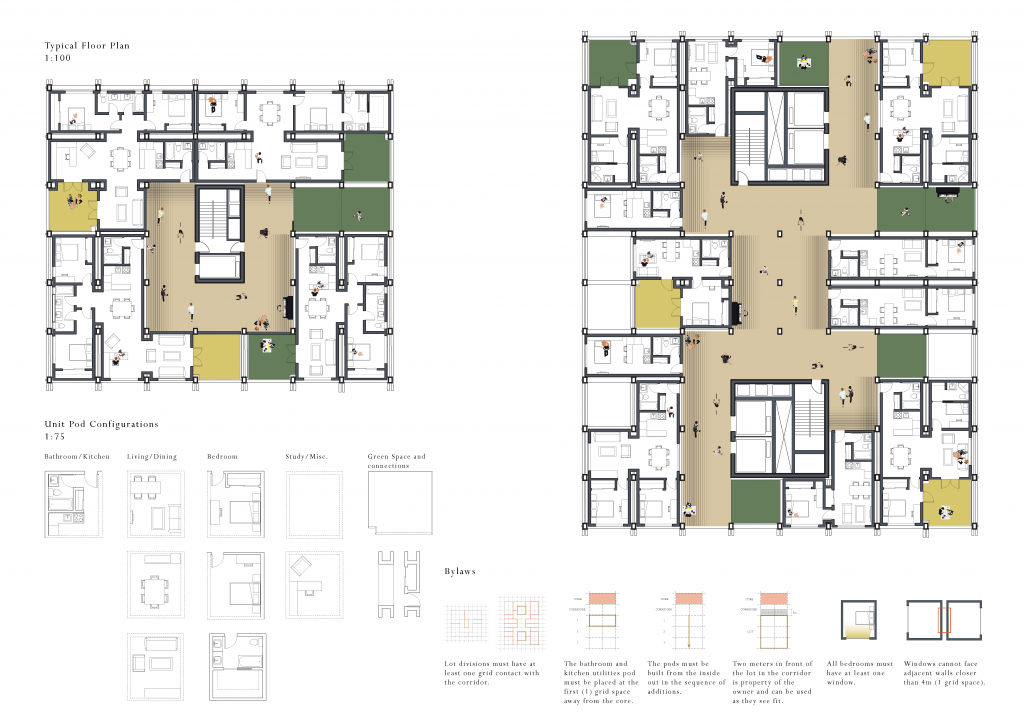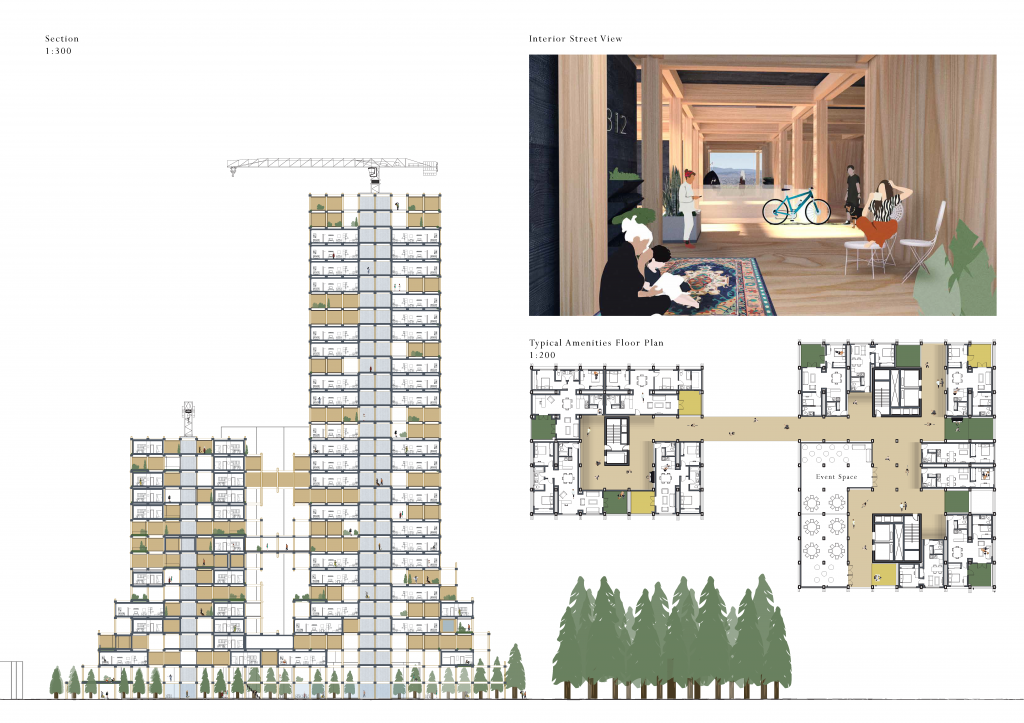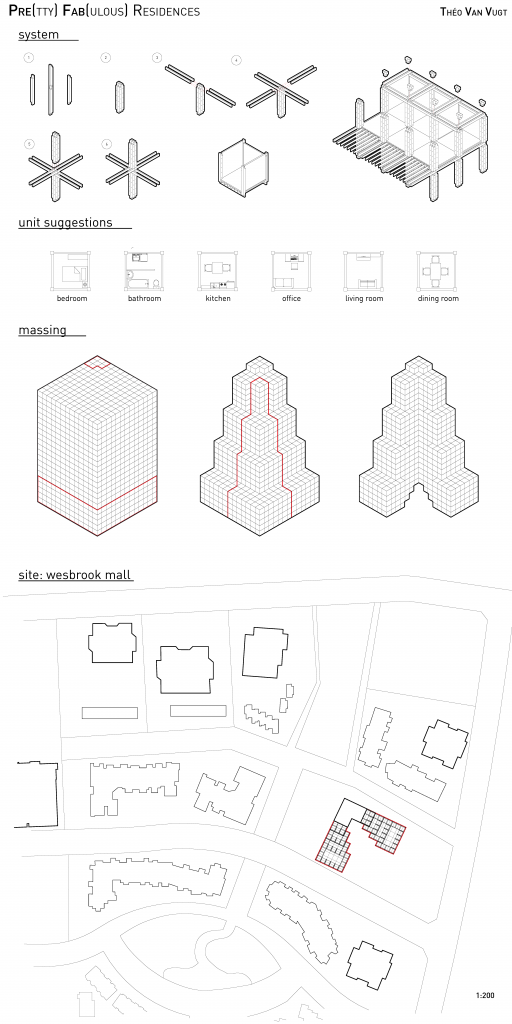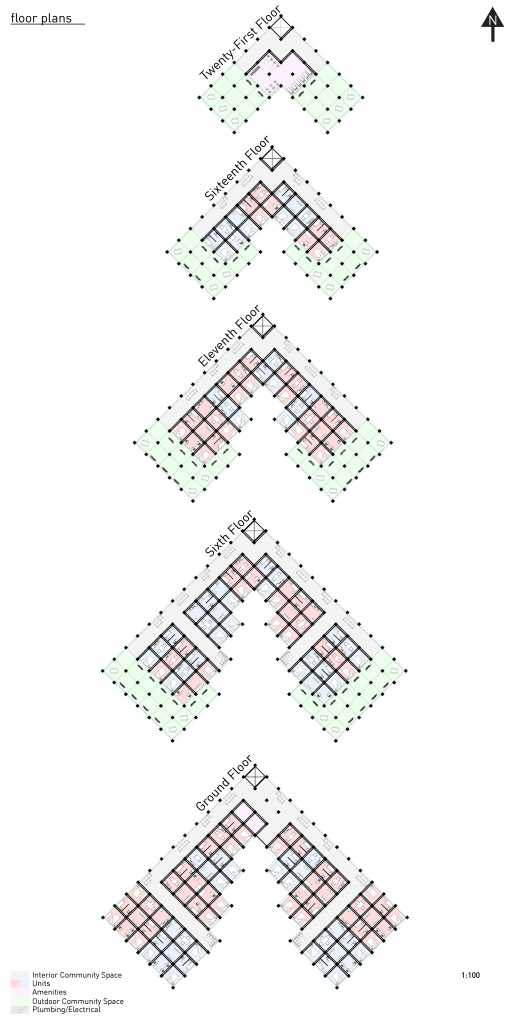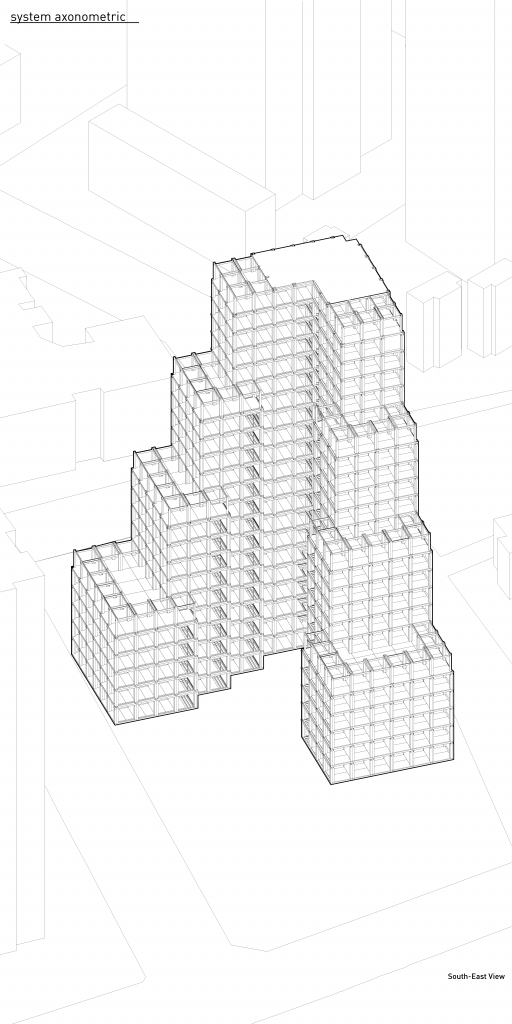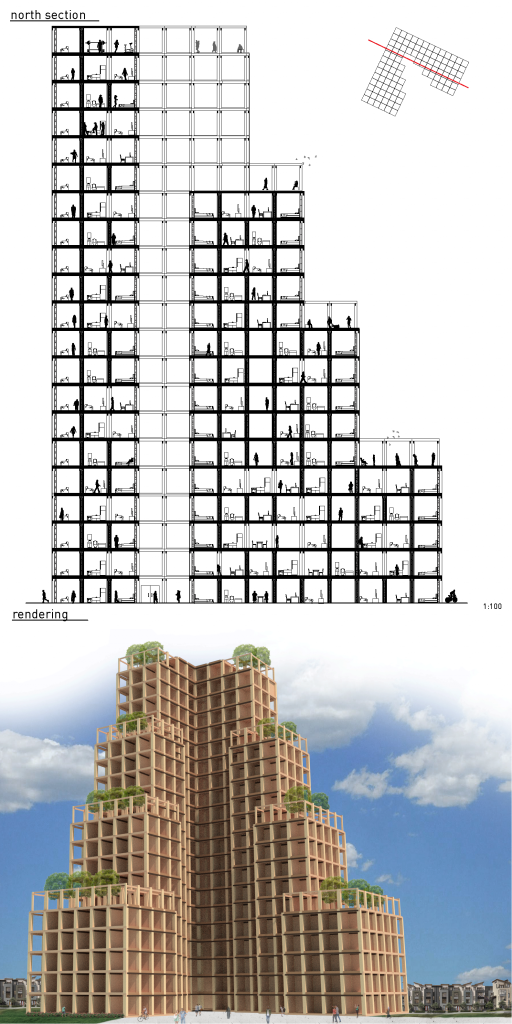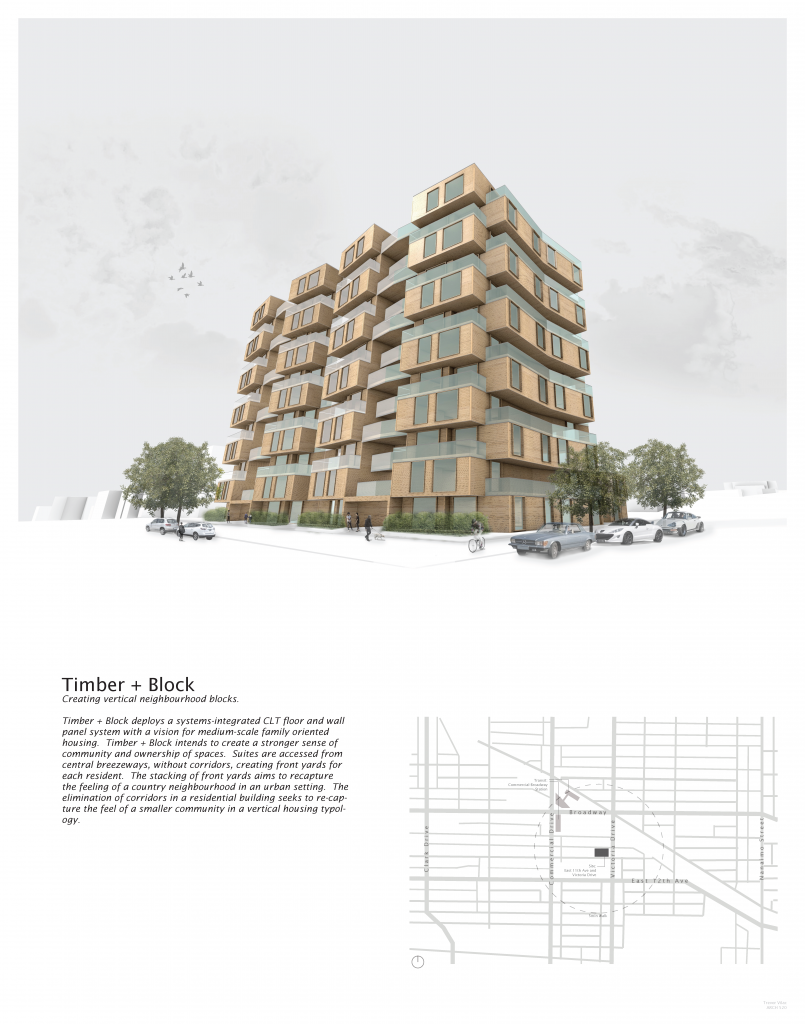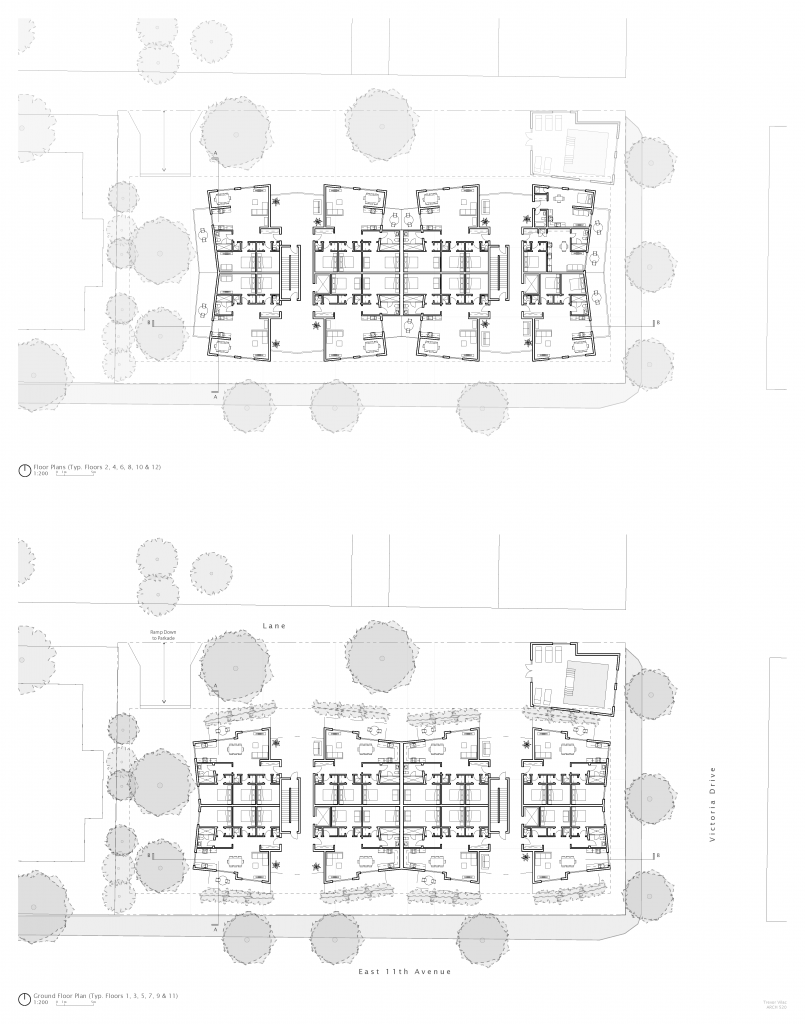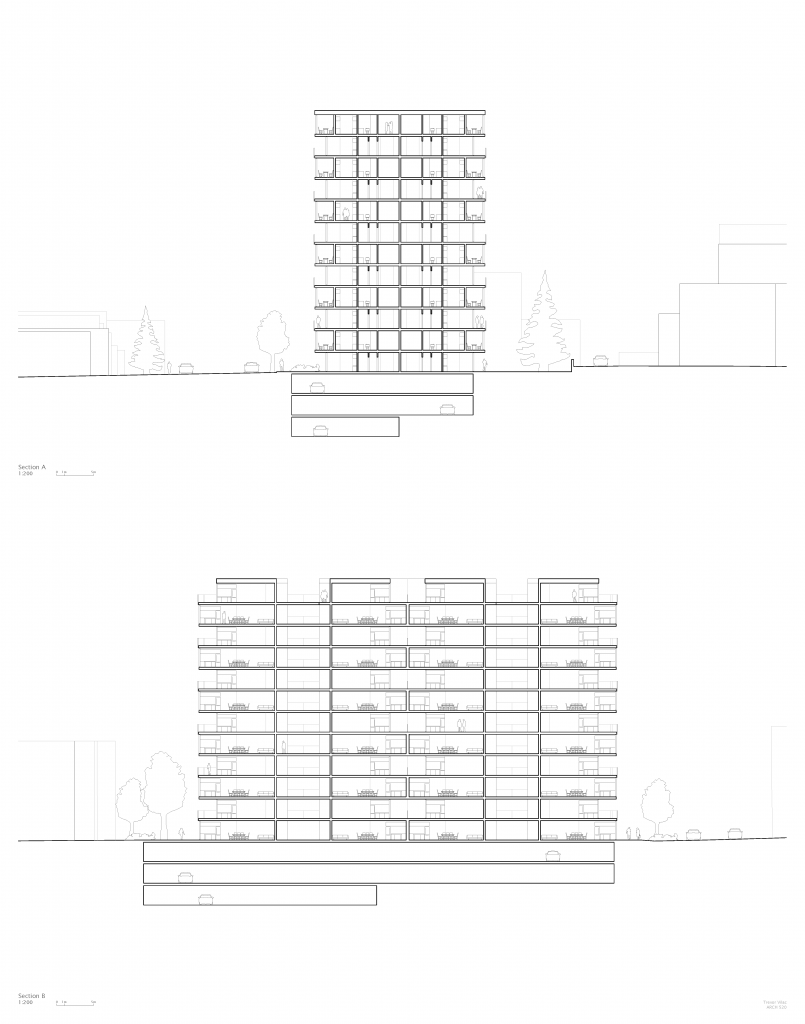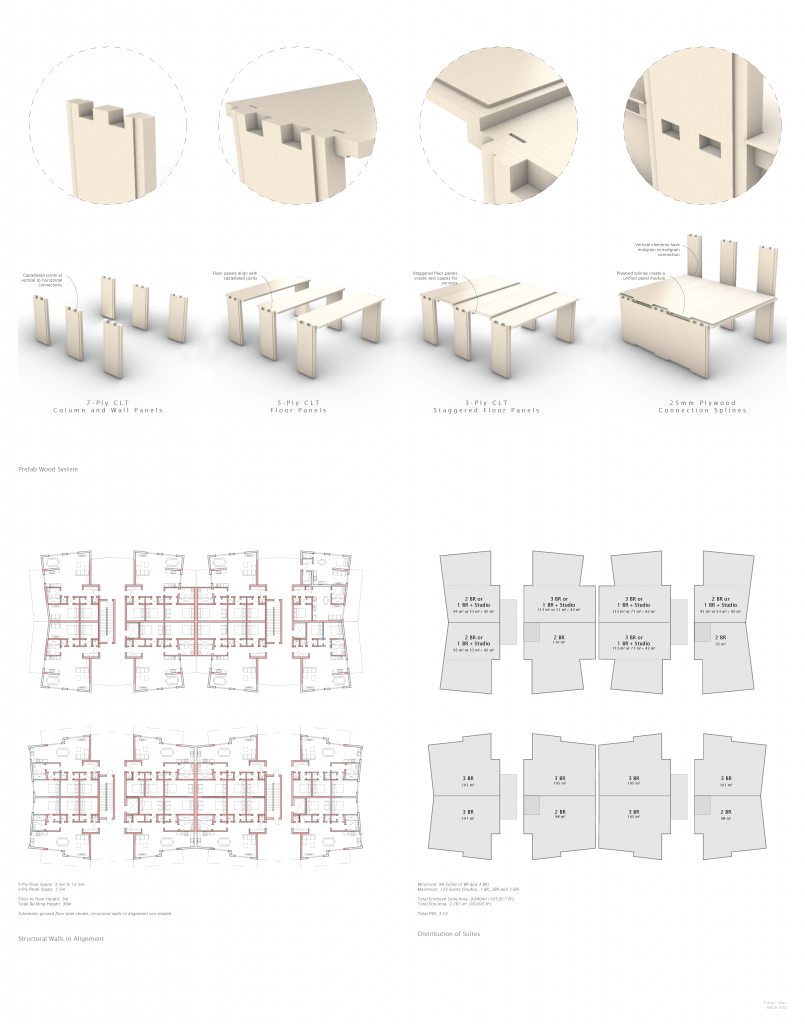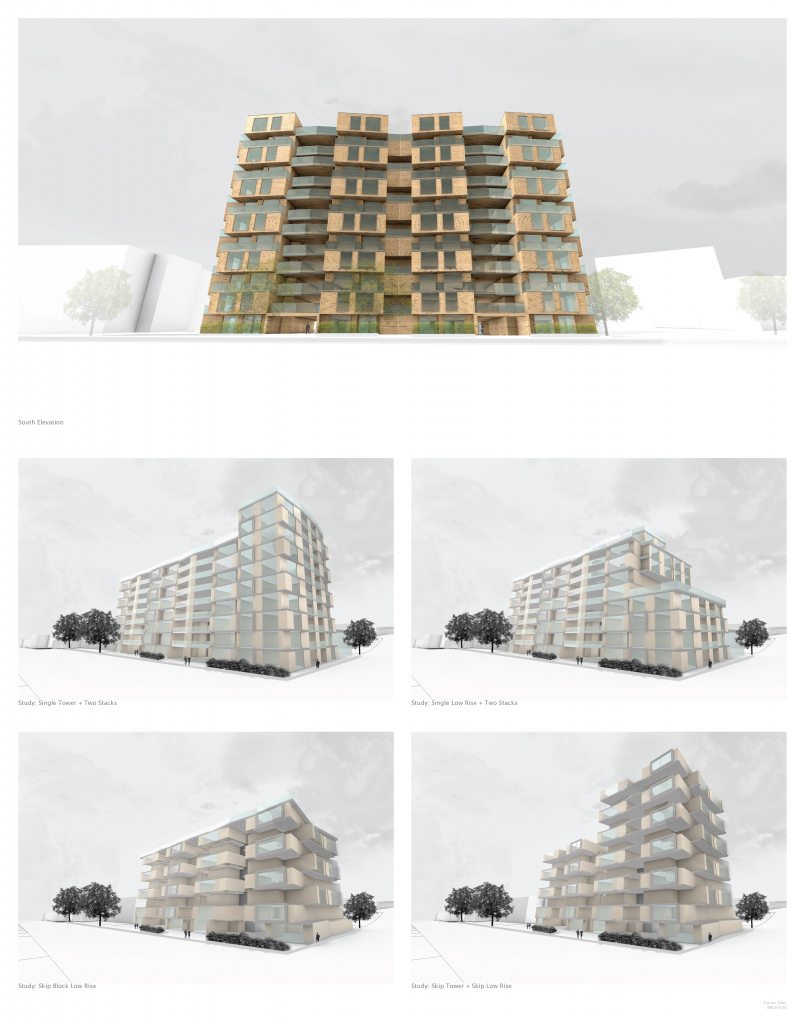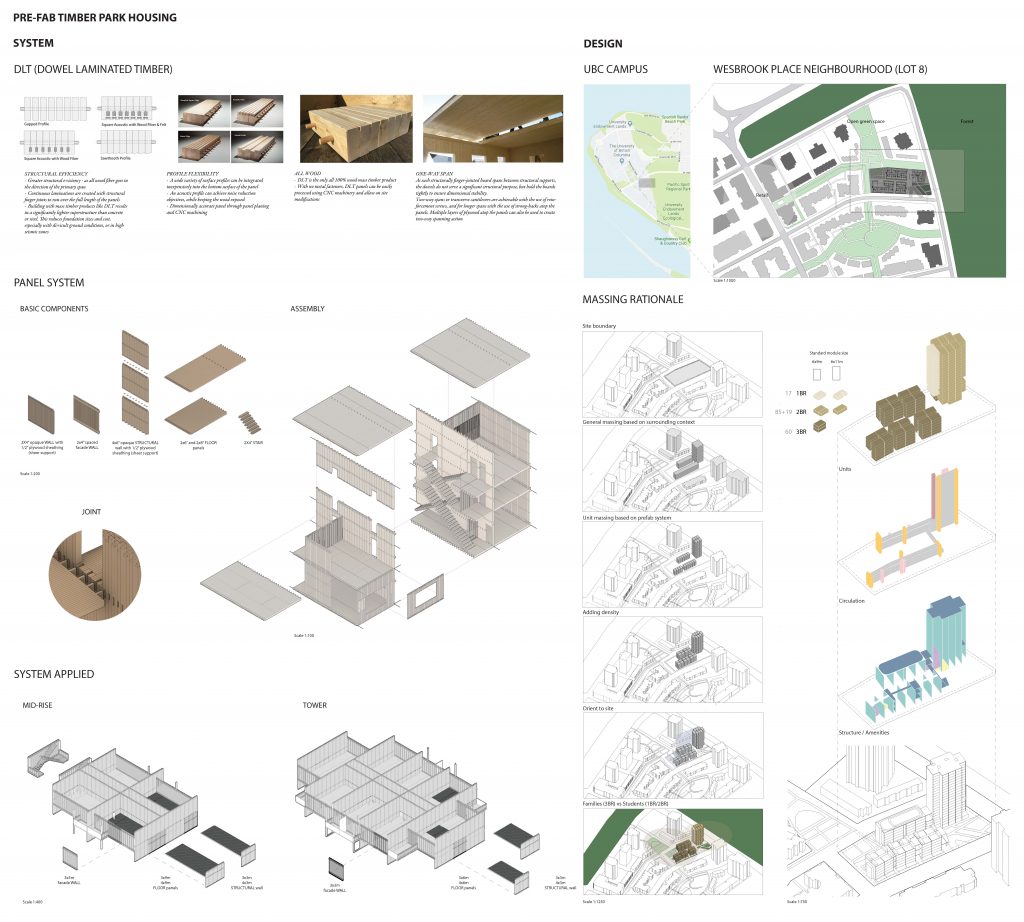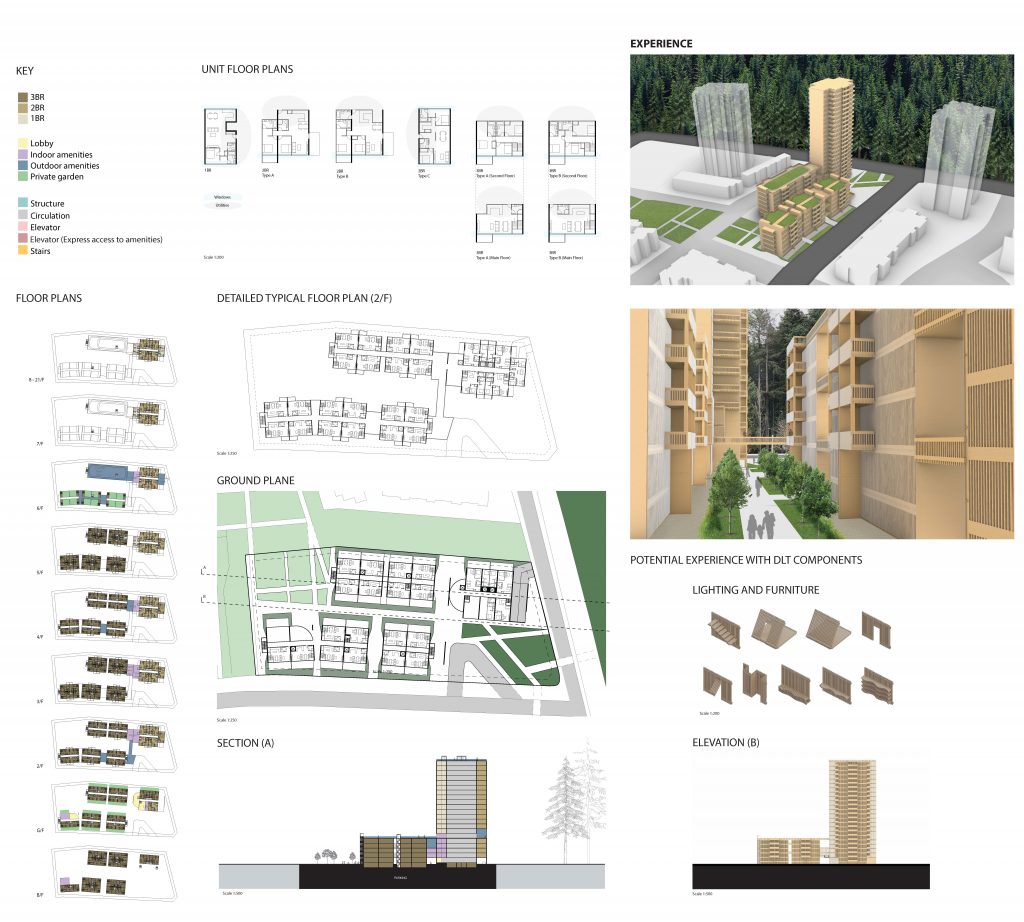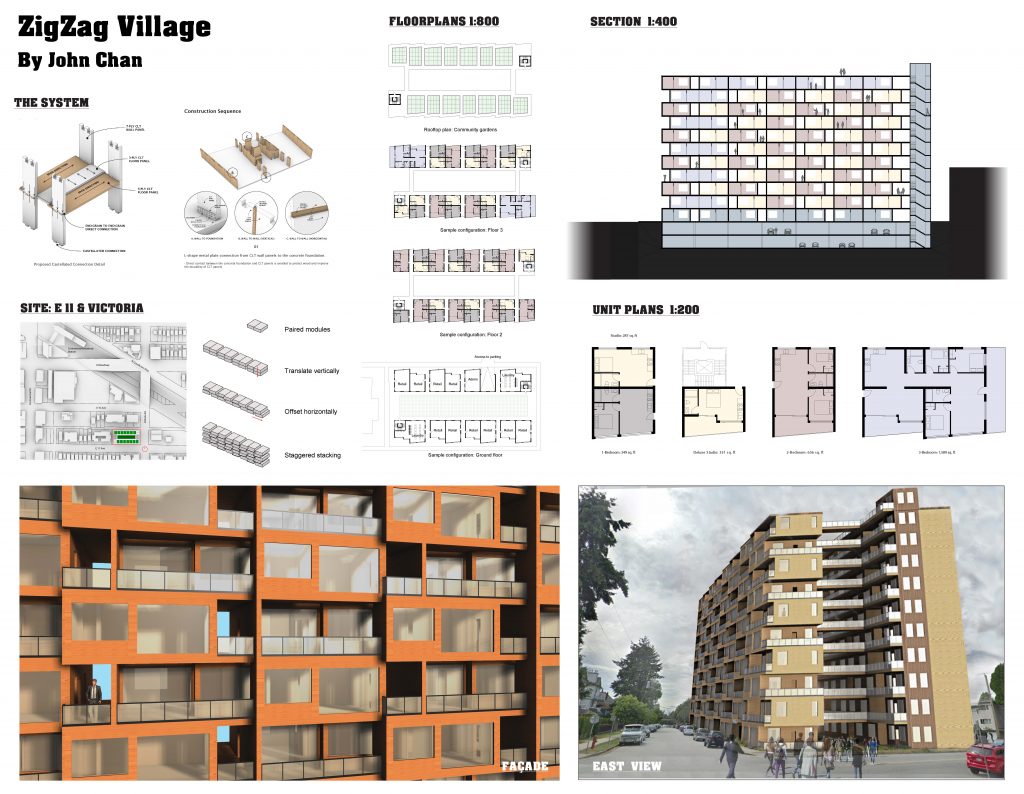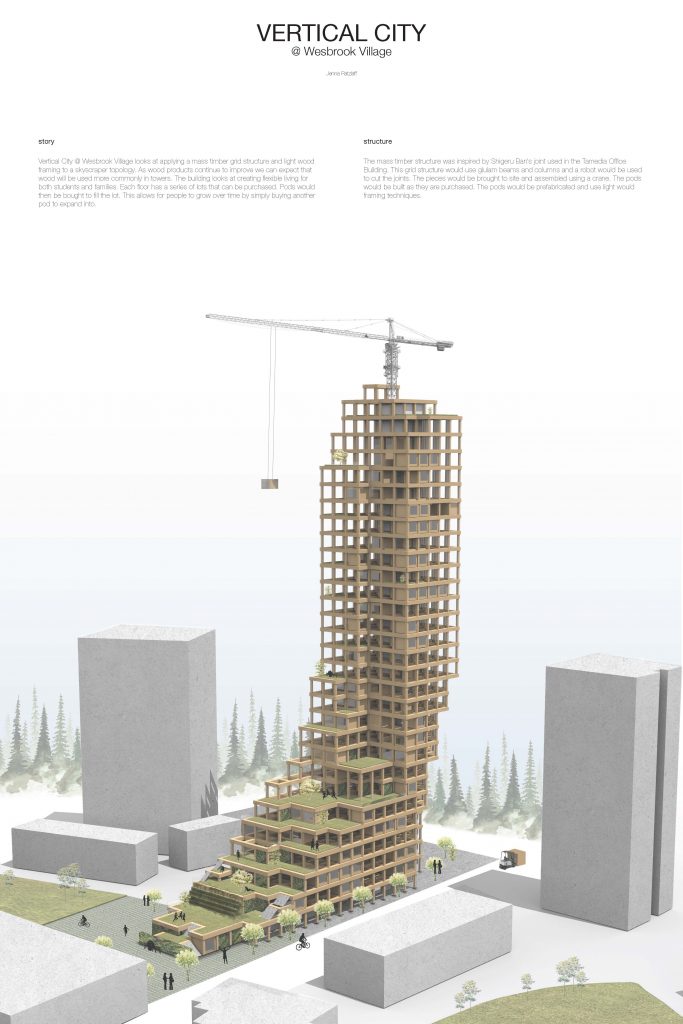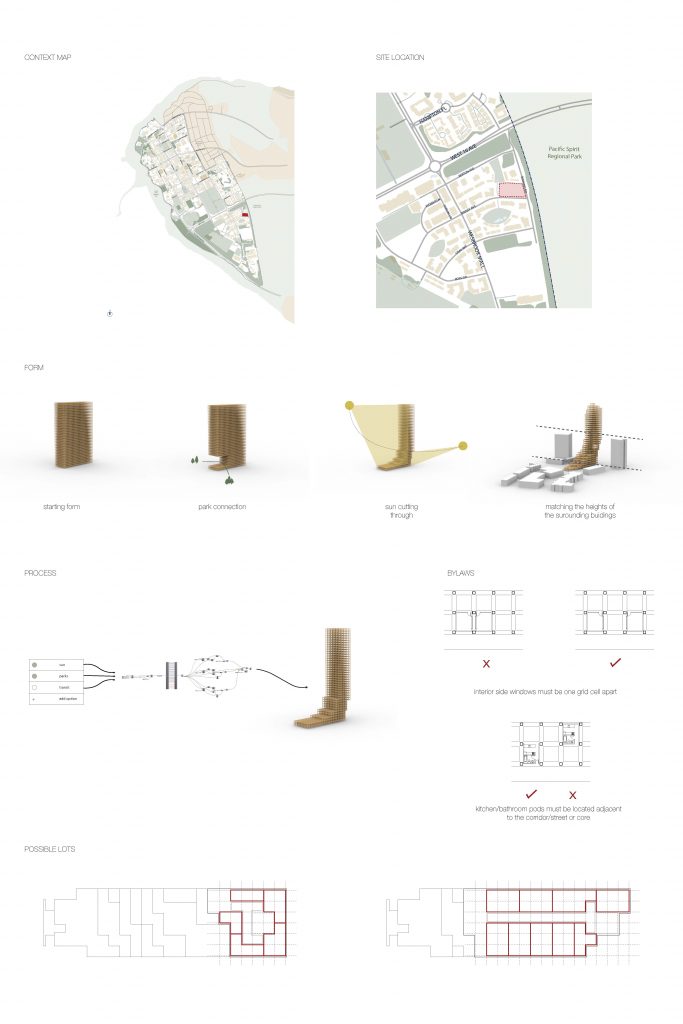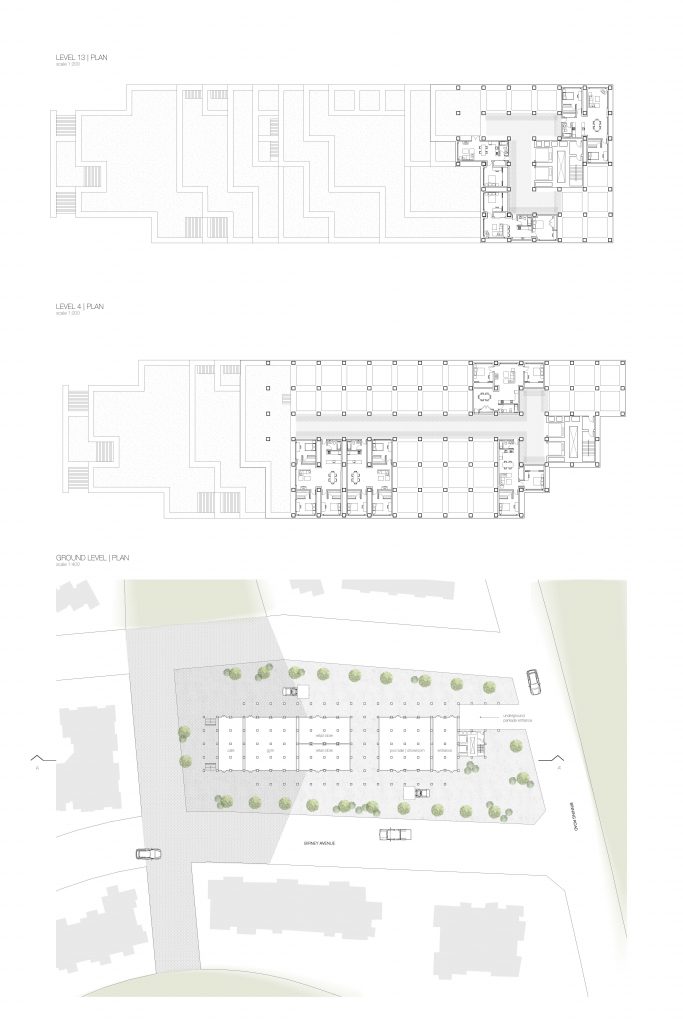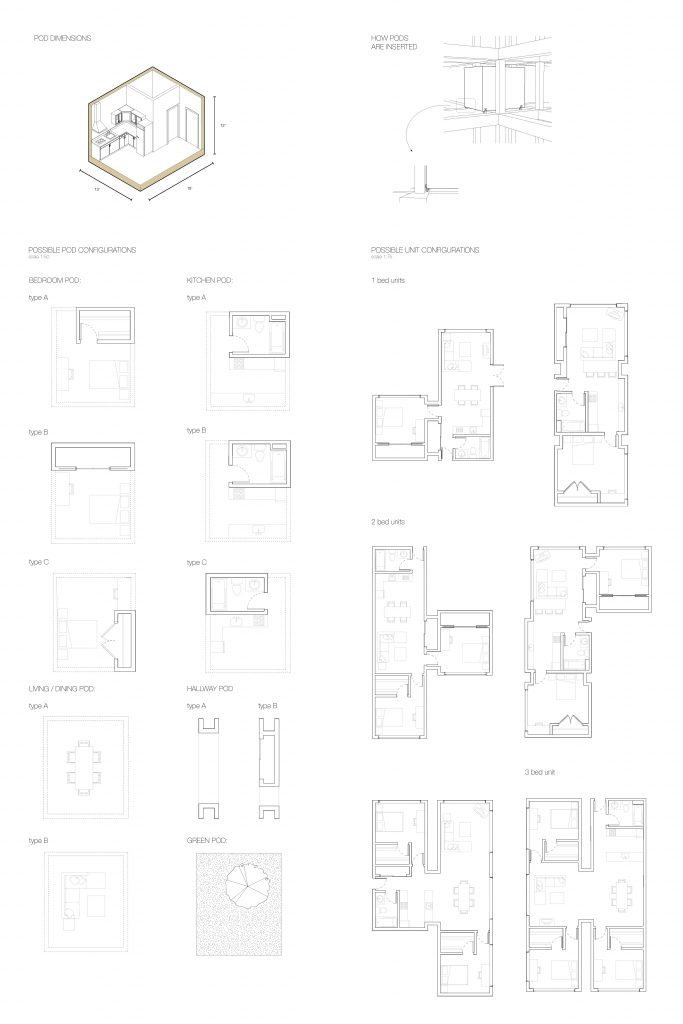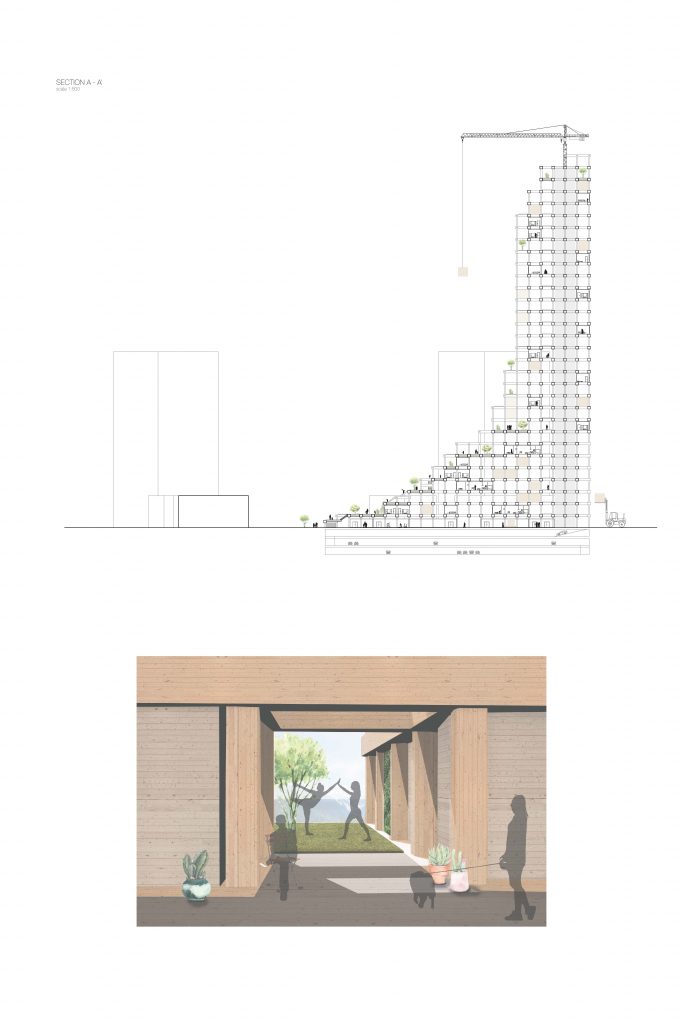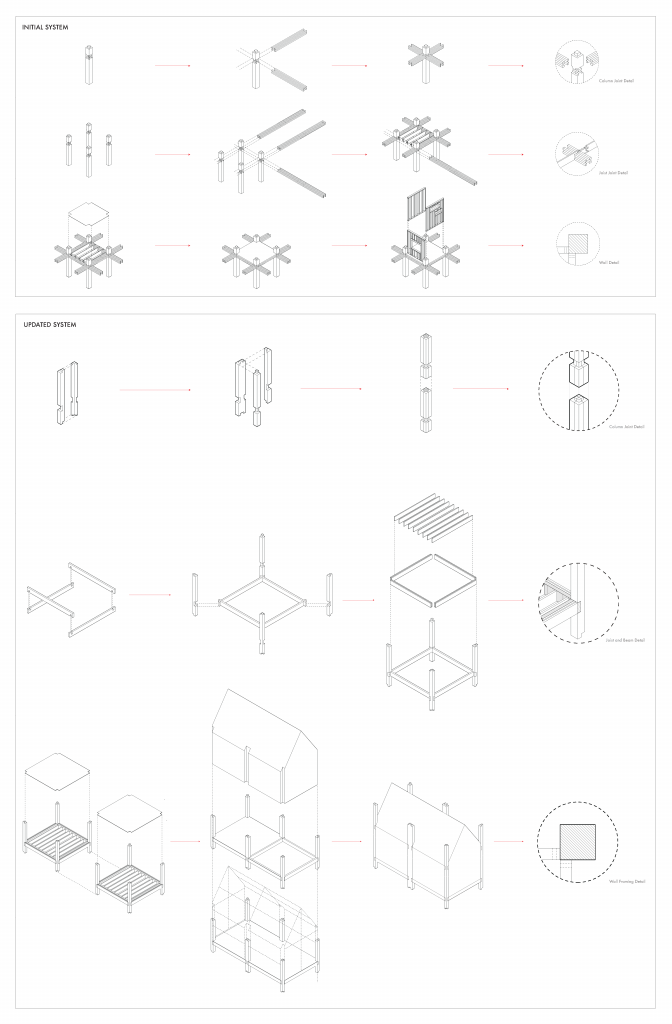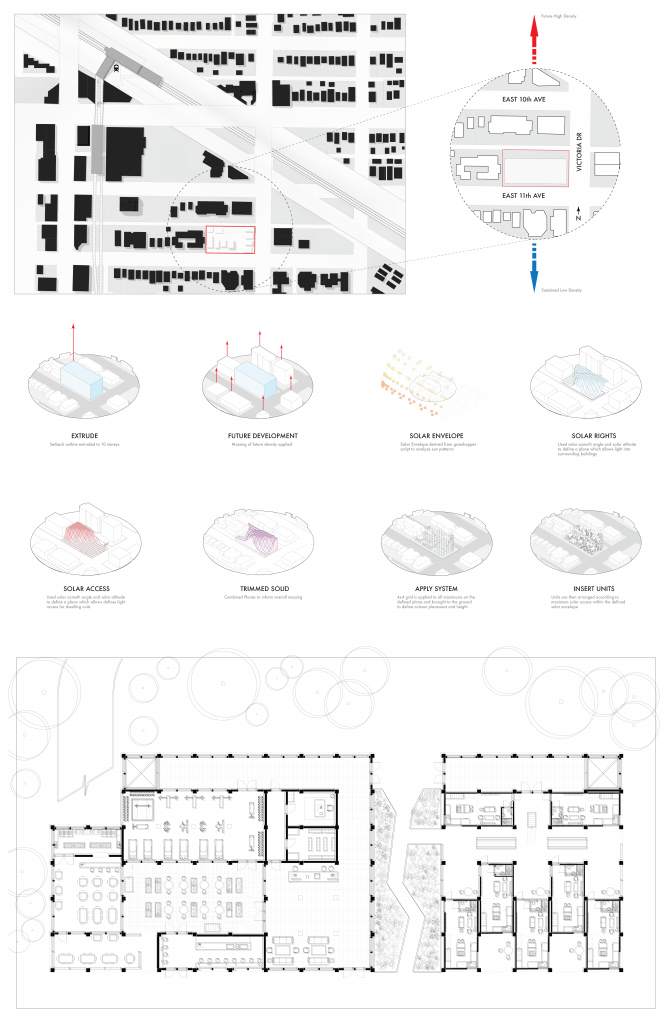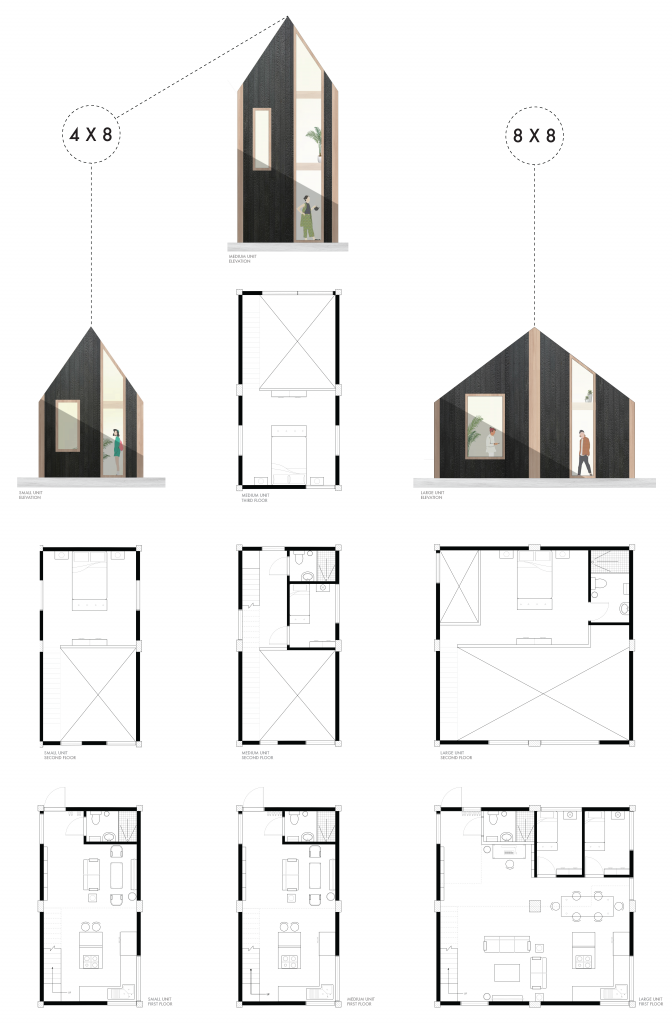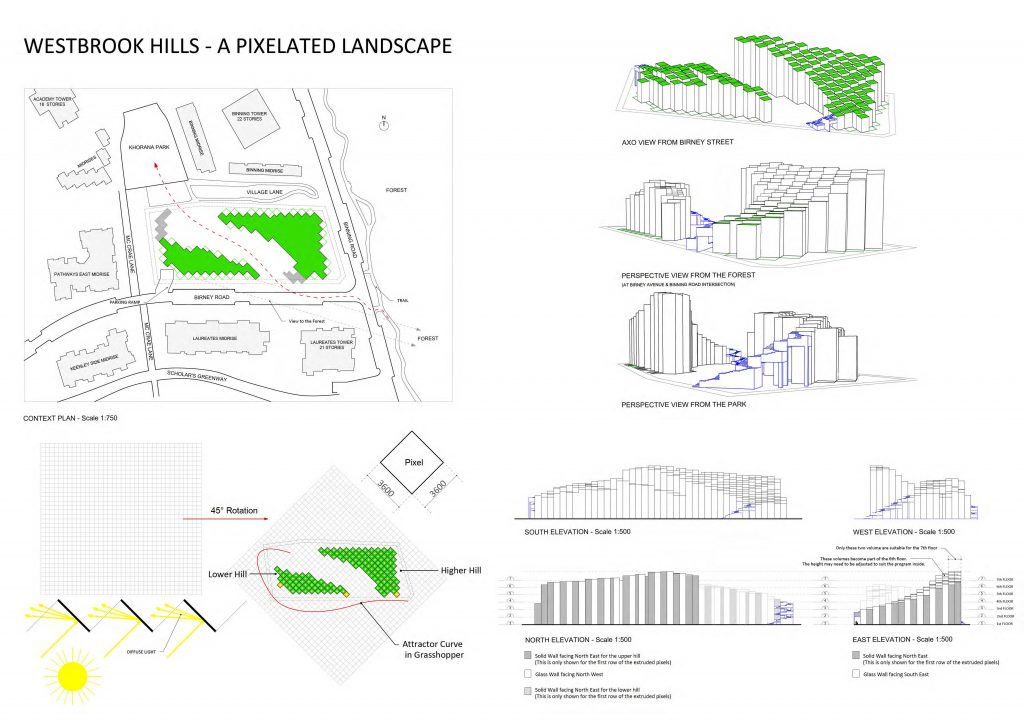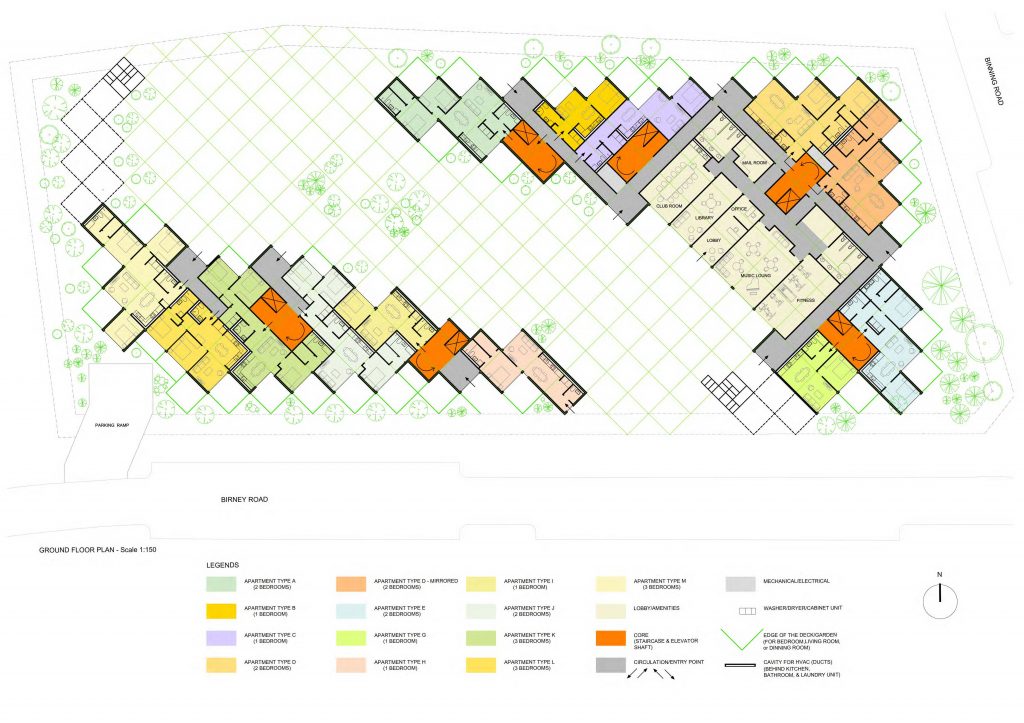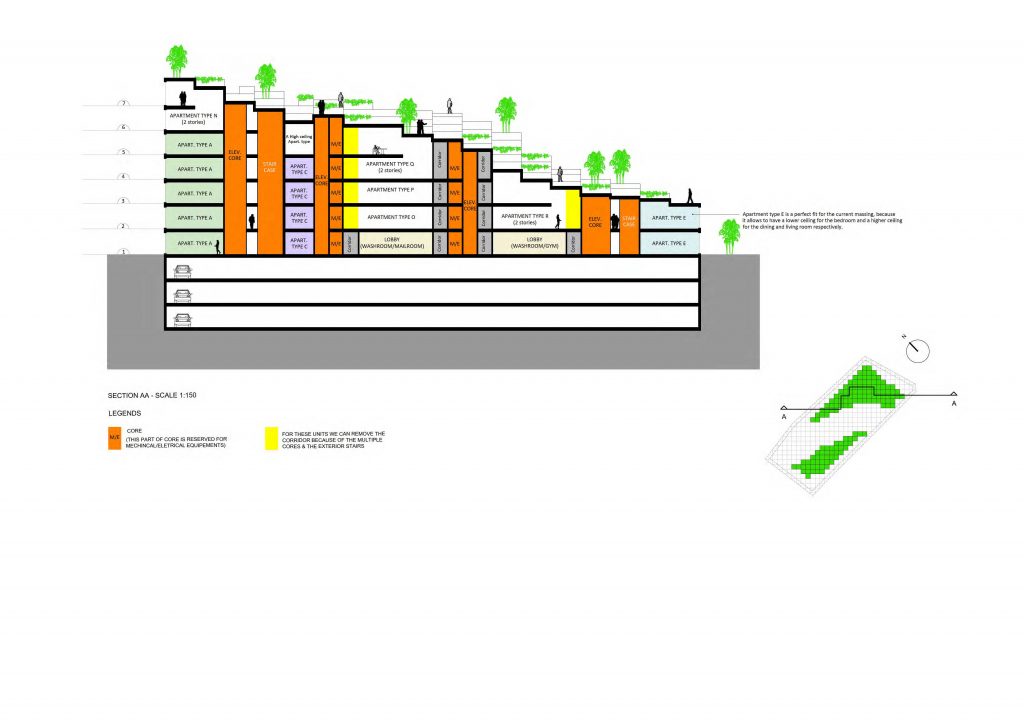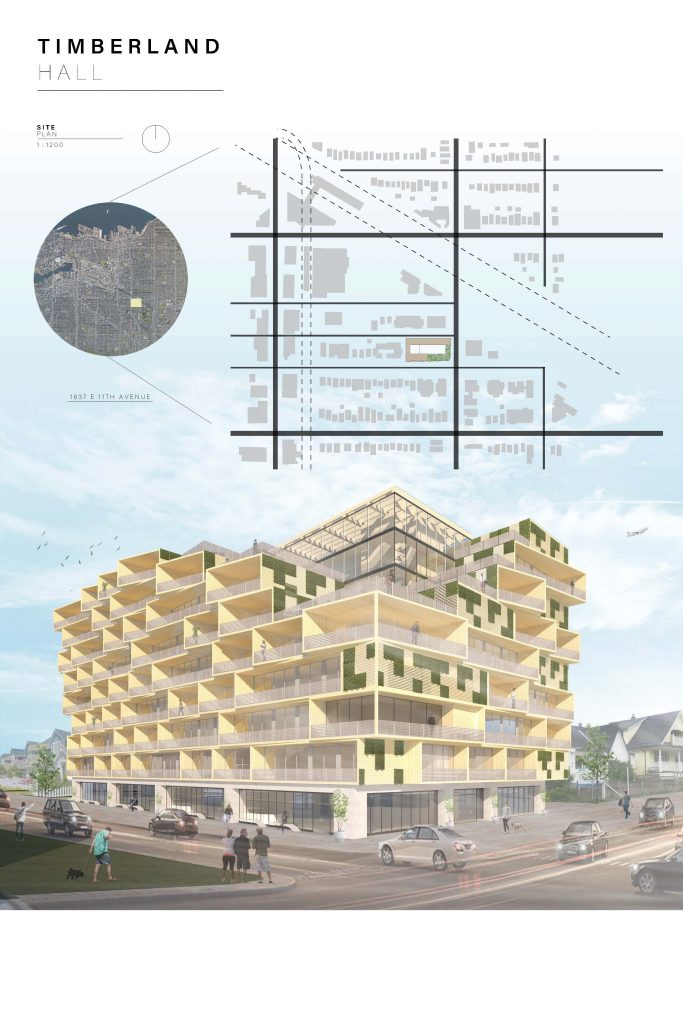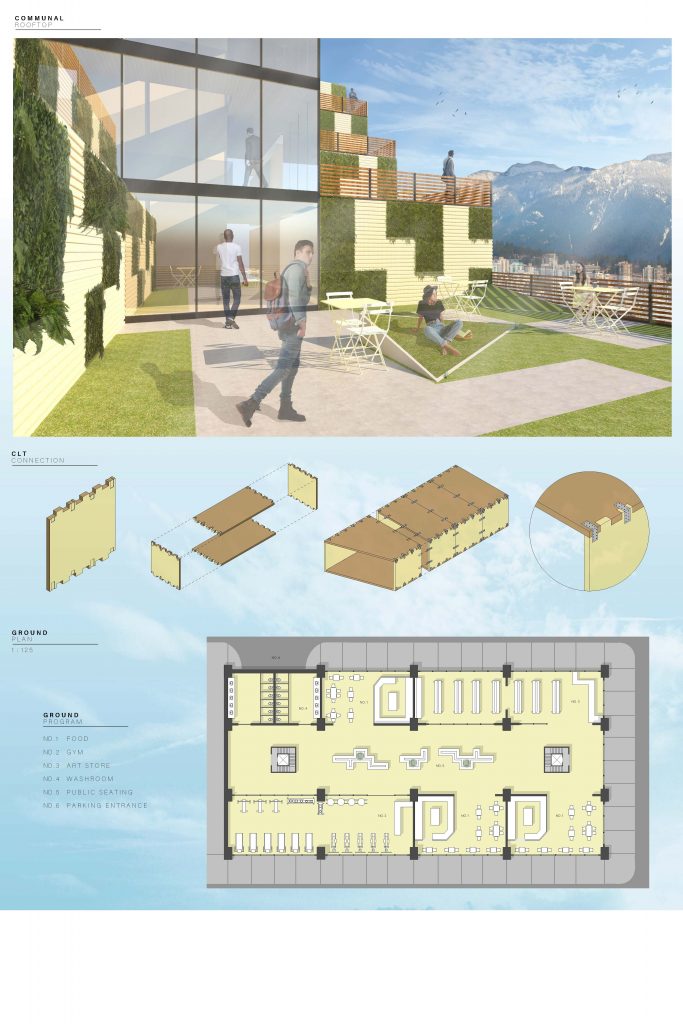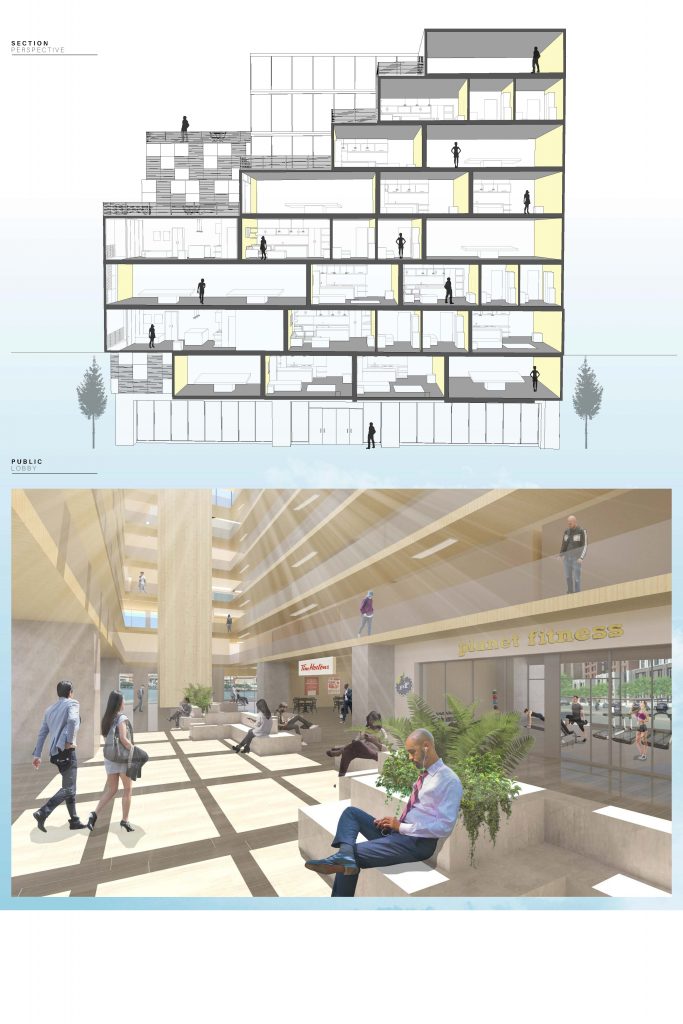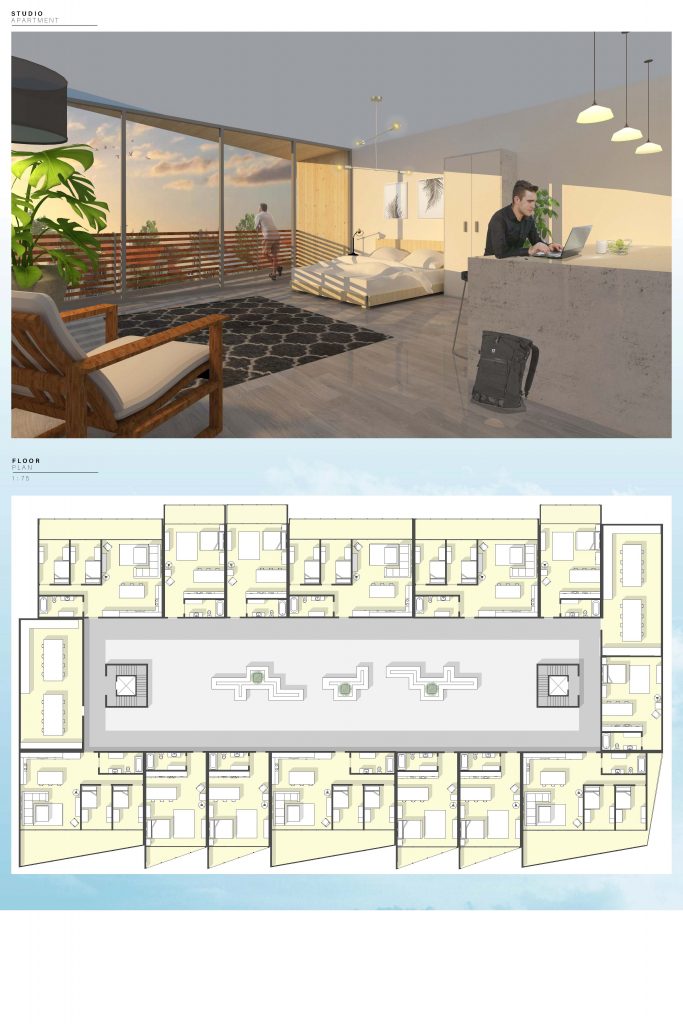by Zahra Asghari
Category Archives: PS 04
Pre(tty) Fab(ulous) Residences
by Theo Van Vugt
I developed my system to have a range of implementation. Keeping the use of glulam columns and dimensional wood beams from the previous system, I wanted to explore the scale of prefab. I quartered my column and halved the number of beams originally used. The system that followed allows for partial prefabrication, where rooms are created with or without walls, with a pattern of exposed wood beams and columns emerging throughout living units. The system also encourages full prefabrication, where columns containing full 3mx3m units could be bolted together at the digression of the owner. If there was a want for a two-bedroom unit, two bedroom pods would be used. Three-bedroom, three pods, etc. The form itself coincided with the site. Looking from the west, the 21-storey structure related to the nearby Binning Tower and The Laureates Tower, while gradually stepped floors on the east side allowed for maximum exposure to both the sun and Pacific Spirit Park. Meanwhile, outdoor community spaces every five floors gave residents places to sit and enjoy the splendour of Pacific Spirit park, while engaging with those who lived with them.
Timber + Block
Timber Park
ZigZag Village
Vertical City @ Wesbrook Village
The Vertical Domestic
by Bryn Martin
The vertical domestic is an experiment of urban living that uses the formal qualities of the contextual dwelling unit and stacks them within a 4x4m grid. Arrangement is the result of prioritizing elements from the WELL Building Standard across four categories including: Light, Air, Fitness, and Nourishment. The design addressed these four categories through the sun access, the omission of the typical facade for natural ventilation, stair promotion, and lastly the integration of urban gardening plots to create a healthy relationship between residents and sustainable agriculture.
The massing is primarily driven by the desire to provide solar access to each stacked unit as well as responding to daylight needs of the surrounding context. Inspired by Ralph Knowles and his idea of the solar envelope, a grasshopper script was created to define two faceted planes that define the solar conditions of the site in regards to “Solar Collection” for each unit as the “Solar Rights” of the future developments of the surrounding area.
Each unit is designed to take advantage of prefabrication practices by leaning on the capabilities of mass timber to pick up the loads and light wood framing for the customizable units themselves. Wood was chosen as the main building material for the overall ease in which it can be custom cut and pre-fabricated before being placed on site.

